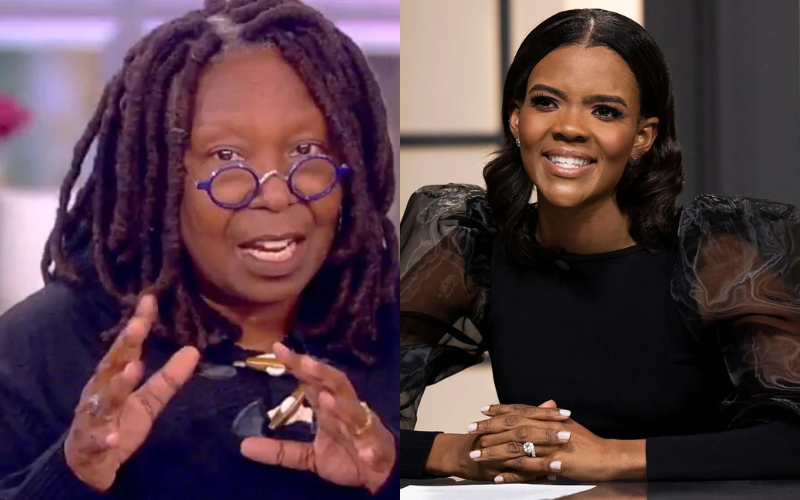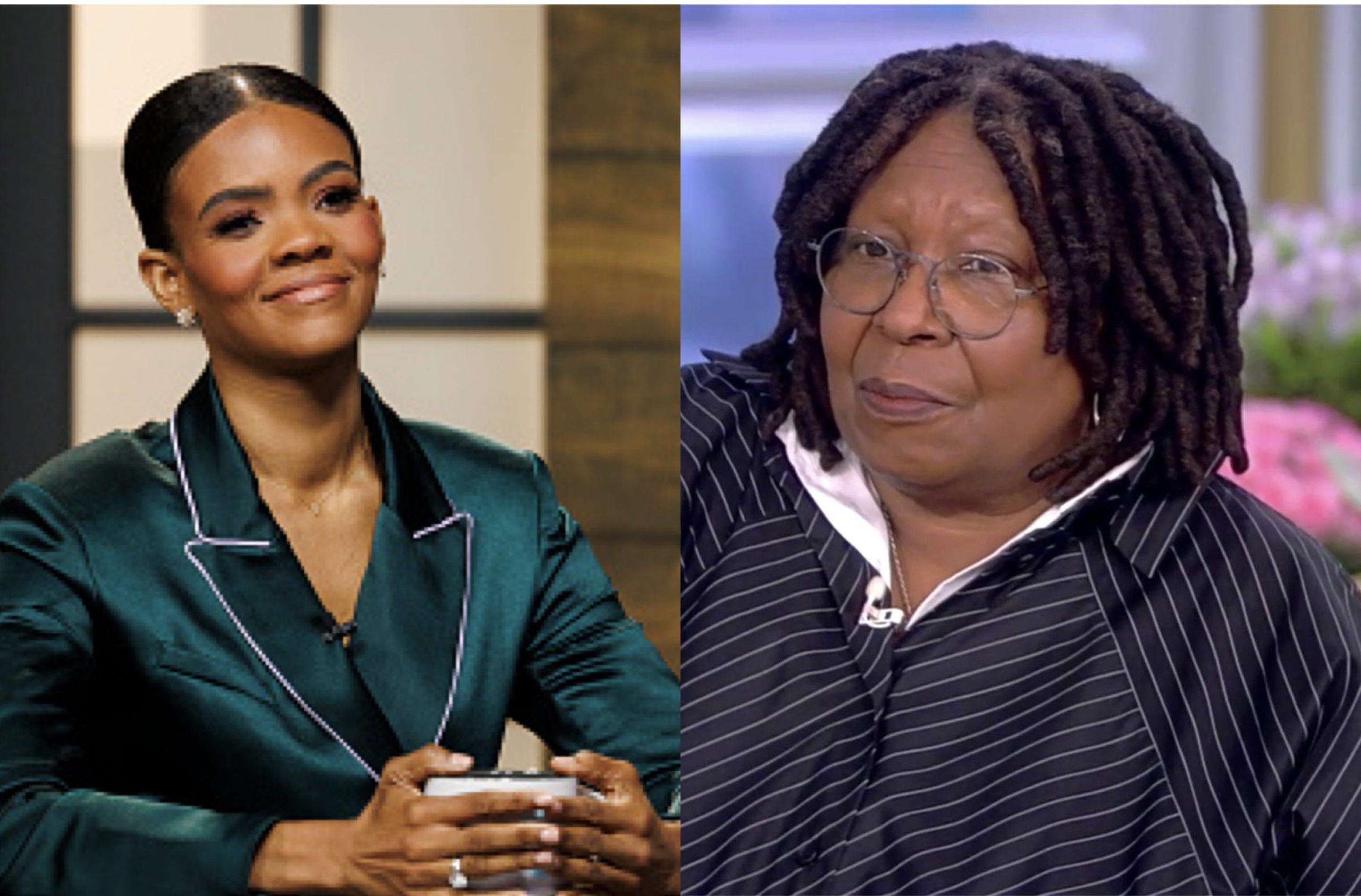In a move that has sent shockwaves through the television and entertainment industry, conservative commentator Candace Owens forcibly removed Whoopi Goldberg from the set of ‘The View.’ This dramatic confrontation occurred during a live taping, with Owens citing her refusal to tolerate what she termed Goldberg’s “toxicity” in the studio.
The tension between Candace Owens and Whoopi Goldberg has been building for some time, given their starkly contrasting political views and public personas. Goldberg, a long-time co-host of ‘The View’ and a seasoned actress, is known for her liberal viewpoints, while Owens, a guest on the show, has gained prominence as a vocal conservative activist.

The incident reportedly unfolded after a heated discussion on a politically charged topic. Witnesses and insiders suggest that the argument escalated quickly, leading Owens to declare, “I don’t want her toxicity here,” before insisting that Goldberg leave the set. This unexpected action stunned both the live audience and fellow co-hosts, halting the show’s production temporarily.
The event has sparked a fierce debate across social media platforms and among public figures. Supporters of Candace Owens praise her for standing up for her principles and maintaining a strong stance against what they see as liberal bias in the media. Conversely, Whoopi Goldberg’s fans and liberal commentators have rallied to her defense, condemning Owens’ actions as disrespectful and an affront to the free exchange of ideas that ‘The View’ is supposed to represent.

Media analysts are also weighing in, suggesting that this incident could have deeper implications for ‘The View’ and similar t alk shows that regularly host guests with polarizing views. The question arises: How can these platforms balance strong opinions and maintain civility without stifling open dialogue?
This confrontation might prompt television networks and producers to reevaluate how they manage on-air interactions between figures with opposing viewpoints. The challenge lies in fostering a space that encourages robust debate but also ensures that discussions do not devolve into personal attacks or become so heated that they disrupt the program.

Some industry experts argue that what transpired on ‘The View’ could serve as a cautionary tale for producers to implement clearer guidelines or mediation practices during live segments. Others see it as a reflection of a broader societal divide that has increasingly manifested in media environments, particularly on shows known for their political discussions.
As ‘The View’ deals with the fallout from this incident, questions linger about the future dynamics of the show. Will producers opt for a more cautious approach to guest selection and topic discussion? Or will they use this incident as a springboard to take on even more controversial subjects in an effort to boost ratings?

Furthermore, the implications for Candace Owens and Whoopi Goldberg are significant. Owens might experience a surge in popularity within conservative circles, being viewed as a figure who challenges mainstream media narratives. Meanwhile, Goldberg’s response and her next steps will be closely watched by those who see her as a vital voice for progressive viewpoints in the media.
The removal of Whoopi Goldberg from ‘The View’ by Candace Owens highlights a pivotal moment for televised political discourse in America. It underscores the tension between free expression and the respect required to maintain a constructive dialogue.
As this story continues to unfold, it will undoubtedly spark discussions about the role of media personalities in shaping public discourse and the responsibilities they carry. Whether this incident will change ‘The View’ or simply mirror a divided America remains to be seen, but its impact on public and media conversations about civility and professional conduct in the face of profound disagreements is undeniable.

